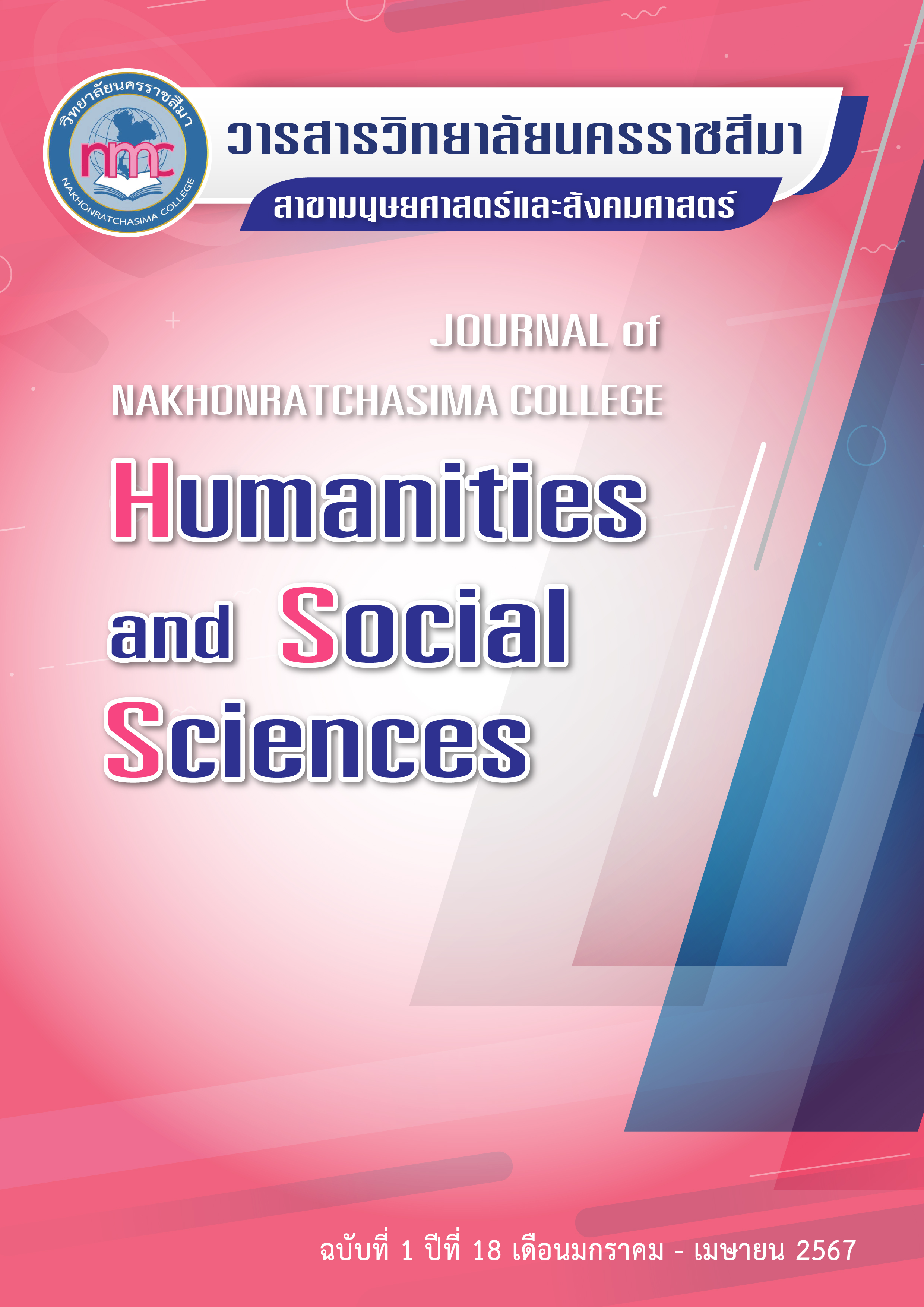Research on Western Classical Piano Performance Based on the Perspective of Hermeneutics
คำสำคัญ:
Western classical piano performance, Hermeneuticsบทคัดย่อ
In recent years, domestic scholars have further explored the interpretation of Western classical piano, and they focused on the musical works, as well as the theoretical significance of the methodology, arguing that the understanding and expression of the piano score is of great significance in the study of piano performance. Therefore, this paper takes Western classical piano performance as the research object, explains the performance of Western classical music based on the hermeneutic philosophy of music, and explores how to find the best way to perform in the secondary creation of piano performance by more closely fitting the creative intention and emotional expression of classical composers. This paper presents the development and evolution of hermeneutics in the field of music performance from the perspective of hermeneutics.
The study of Western classical piano performance requires specific attention to first, it is necessary to sort out the academic background and development of hermeneutics, second, it is necessary to interpret the music texts of the classical Western piano's classical repertoire in terms of specific compositional structure and third, there is a need to explore the meaning and influence of contemporary piano performance, an issue that would involve, to some extent, the question of the shape of Western classical music. The western classical piano performance from the perspective of hermeneutics, including the form of western classical music, the characteristics of piano performance and the analysis of performance. We analyze the characteristics of classical piano music forms from the perspective of hermeneutics, such as the performance style, effects, and stylistic features of classical piano. In the performance of piano works, “scales” and “arpeggios” are not only an important cornerstone of the piano playing technique in the classical music period, but also the core of the whole piano music works.
เอกสารอ้างอิง
Chu Xiaorui. (2007). On the Performance of Haydn's [J]. Yuefu Xinsheng, (1):179-182.
Hua Mao. (2000). An Analysis of the Application of the Sustain Pedal in the Performance of the Piano [J]. Explorations in Music, (2):50-54.
Liang Wenguang. (2007). Characteristics of Haydn's Piano Sonatas and Key Points of Performance [J]. Journal of Zhaoqing University, (4):91-93.
Luo Yaozhen. (1996). Looking for a Friend in the Ethereal Depths - An Introduction to Haydn’s Piano Sonatas and Their Recording [J]. China Avphile, (12):134-135.
Wang Juan. (2006). A Few Problems to Note in Playing Haydn Piano Sonatas [J]. Music World, (6):25-26.
Xiong Xu, Zhou Yang. (2006). Classical Style in Piano Performance from Haydn and Mozart [J]. Art Education, (6):74-75.
ดาวน์โหลด
เผยแพร่แล้ว
รูปแบบการอ้างอิง
ฉบับ
ประเภทบทความ
สัญญาอนุญาต
จรรยาบรรณผู้เขียนบทความ
ผู้เขียนบทความต้องรับรองว่าบทความนี้ไม่เคยตีพิมพ์ในวารสารใดหรือสิ่งพิมพ์อื่นๆ มาก่อน ต้องไม่คัดลอกผลงานผู้อื่นมาปรับแต่งเป็นบทความของตน และไม่ได้อยู่ระหว่างการเสนอเพื่อพิจารณาตีพิมพ์ อีกทั้งยอมรับหลักเกณฑ์การพิจารณาและการตรวจแก้ไขบทความต้นฉบับโดยกองบรรณาธิการวารสารวิทยาลัยนครราชสีมา สาขามนุษยศาสตร์และสังคมศาสตร์
บทความทุกเรื่องได้รับการตรวจพิจารณาทางวิชาการโดยผู้ทรงคุณวุฒิที่มีประสบการณ์และมีความเชี่ยวชาญตรงตามสาขาของบทความ ซึ่งผู้เขียนต้องแก้ไขตามคำแนะนำของผู้ทรงคุณวุฒิภายในระยะเวลาที่กำหนด หากไม่เป็นไปตามกำหนดกองบรรณาธิการขอสงวนสิทธิ์และยกเลิกการตีพิมพ์โดยจะแจ้งให้ทราบต่อไป
ข้อความที่ปรากฏในบทความของวารสารนี้เป็นความคิดเห็นของผู้เขียนซึ่งไม่เกี่ยวข้องกับวิทยาลัยนครราชสีมาแต่อย่างใด และกองบรรณาธิการขอสงวนสิทธิ์ในการพิจารณาและตรวจประเมินบทความเพื่อตีพิมพ์ในวารสารของวิทยาลัยนครราชสีมา สาขามนุษยศาสตร์และสังคมศาสตร์



